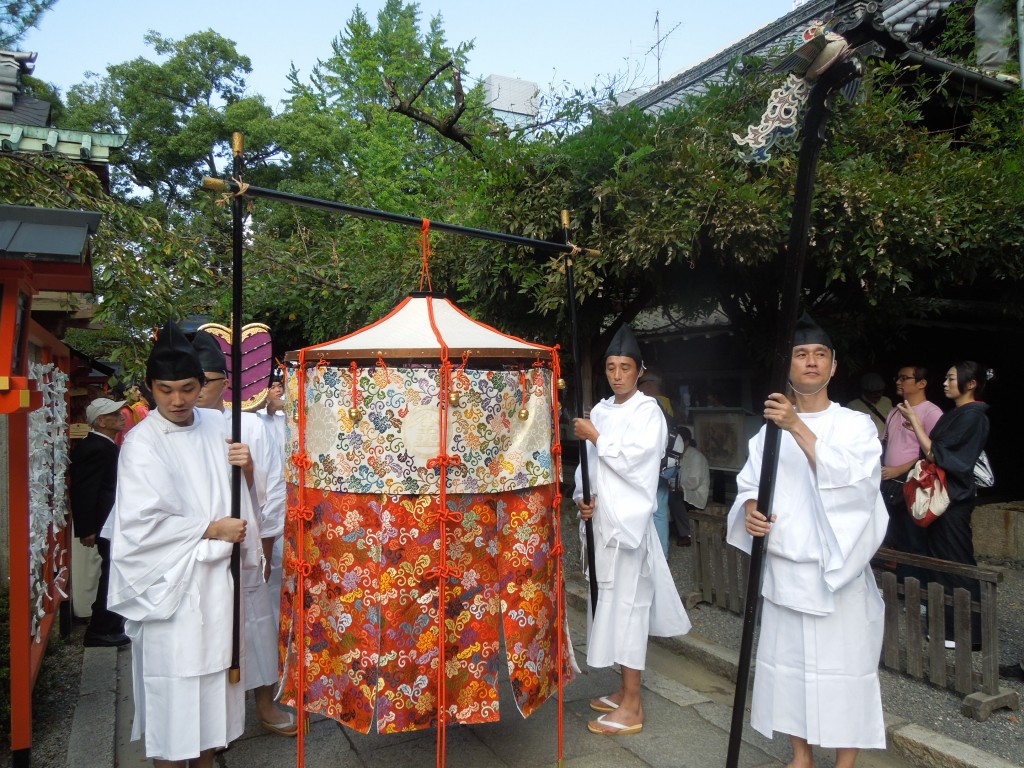
Part of the parade at the Yasui Konpira festival, a Heian-era style covering for aristocratic women
Glorious autumn sunshine, Kyoto, and the season for Shinto festivals – what could be finer. Amongst the festivals this weekend was the Taisai (Big Festival) of Yasui Konpira-gu. This is when the kami spirit is transferred temporarily into a mikoshi (portable palanquin) which is paraded around the parish in an annual rite of renewal and solidarity.
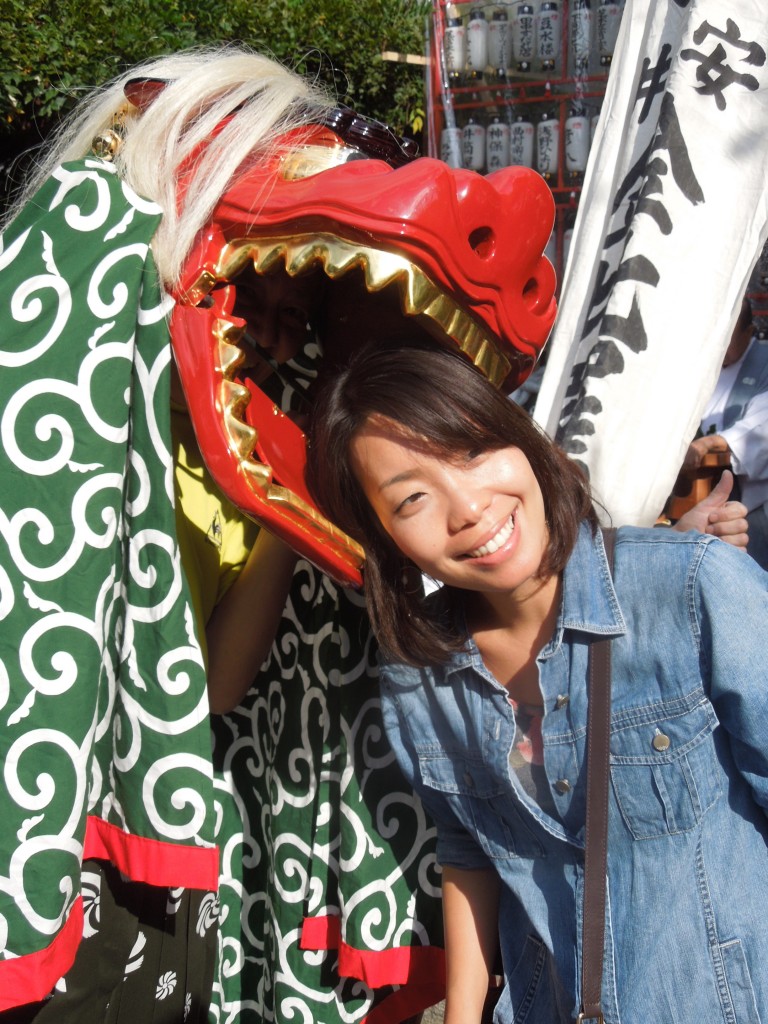
Putting your head in the lion's mouth brings good luck they say
The shrine is set in the heart of the geisha area of Gion. Next to it is a Love Hotel, and it’s close to the Zen temple of Kennin-ji. It’s a quintessential Japanese setting.
The shrine is famous for promoting enkiri enmusubi – the breaking of bad relationships and the making of good ones. This has to do with a rock through which one is supposed to crawl. One direction is to ensure the breaking of a bad relationship, the reverse brings good luck in forging a new one. Before doing so, you should fill in an ofuda piece of paper stating your aim, then stick it on the rock. While crawling through, you keep your mind on your intended goal.
While the mikoshi parade was setting up, there was a huge long queue of people waiting to make or break a relationship, mainly young girls. There were also plenty of startling ema (votive plaques) on show. The wife of a philandering husband not only publicly named the woman he’d had an affair with, but added the address and phone numbers of the mistress and the hope that she’d die soon!
Yasui Konpira-gu is also famous for its ema museum, which was closed during the festival, though on display are a number of ema by famous visitors to the shrine together with some representative examples from the past.
The parade itself was a lively affair, with kagura court music and shishi lion dance. The eye-catching Heian costumes lend colour and elegance to the affair, and given the warmth of the autumn sunshine everyone was in high spirits. October is traditionally a time of harvest and well-being in Japan. What better time to celebrate?!
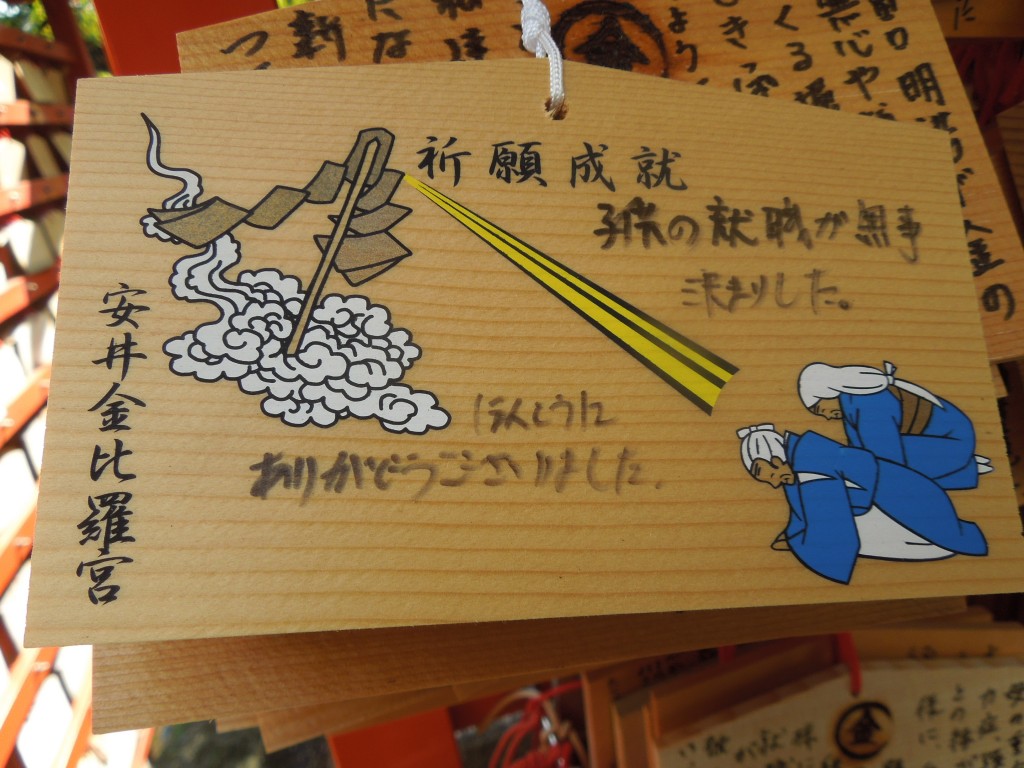
One of the shrine ema has to do with the legendary origins of the shrine when a kami descended into a gohei, though I'm sure there's more to the story than that... something to explore on a future visit, methinks.
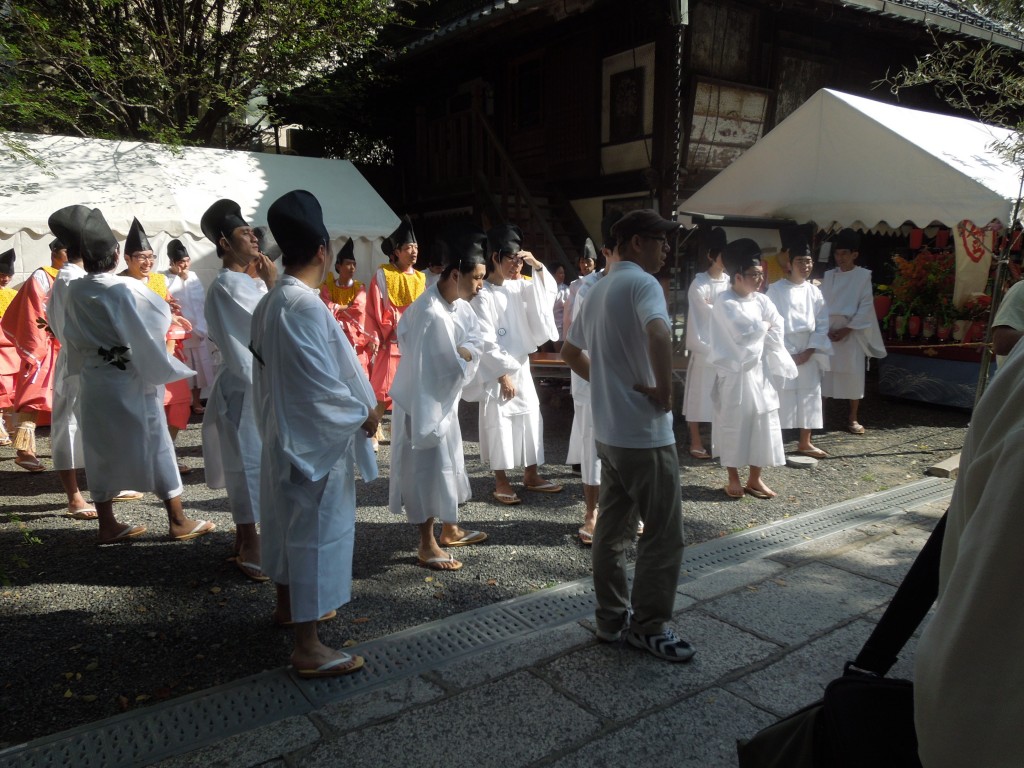
Participants dressed Heian style waiting to take their part in the parade
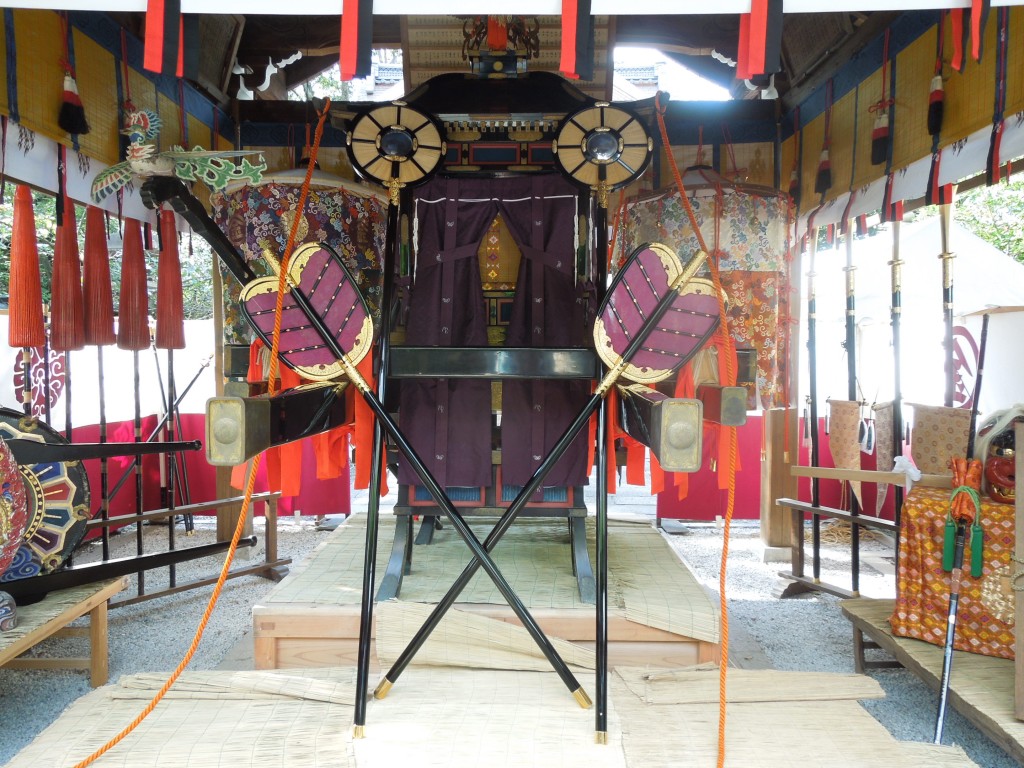
Some of the gorgeous festival ornaments stand ready to take part in the parade
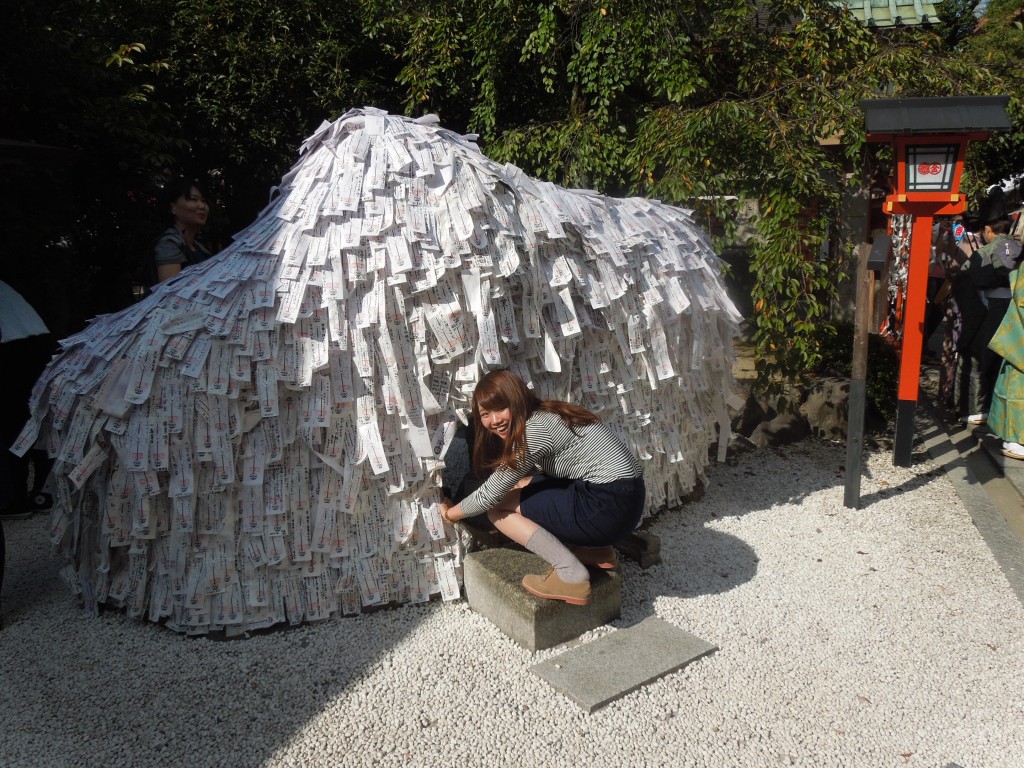
Meanwhile, the enkiri enmusubi rock was doing good business. Notice all the ofuda papers covering the rock, bearing the wishes and hopes of hundreds of visitors
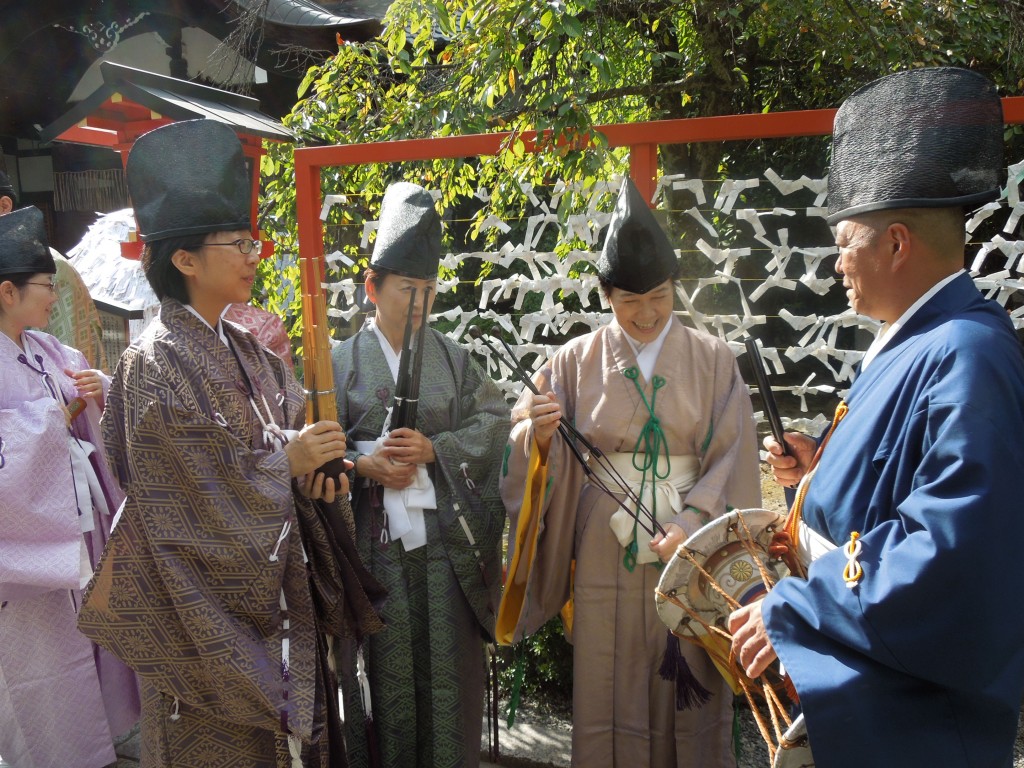
The musicians wait for the parade to start. It looked like a gagaku band to me, but the shrine describes them as kagura.
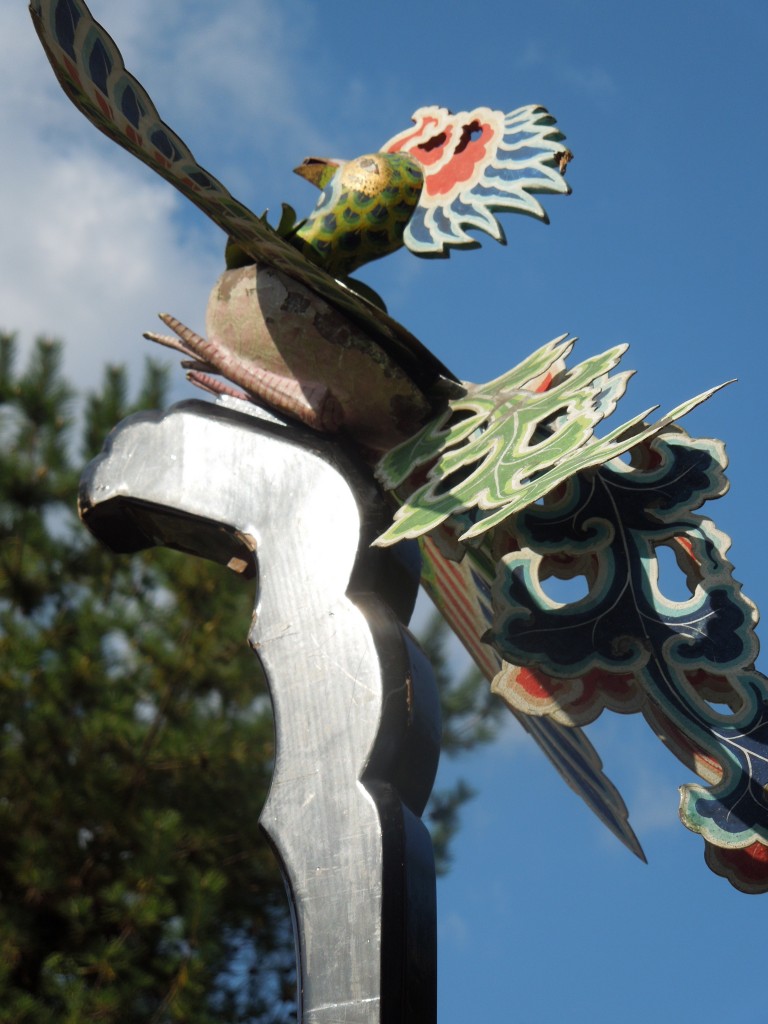
One of the parade elements was a bird atop a pole, suggestive of a shamanic bird of flight. I presumed it was a phoenix, but the person holding it told me it was raichou (Japanese ptarmigan) which according to legend is a bird of protection.

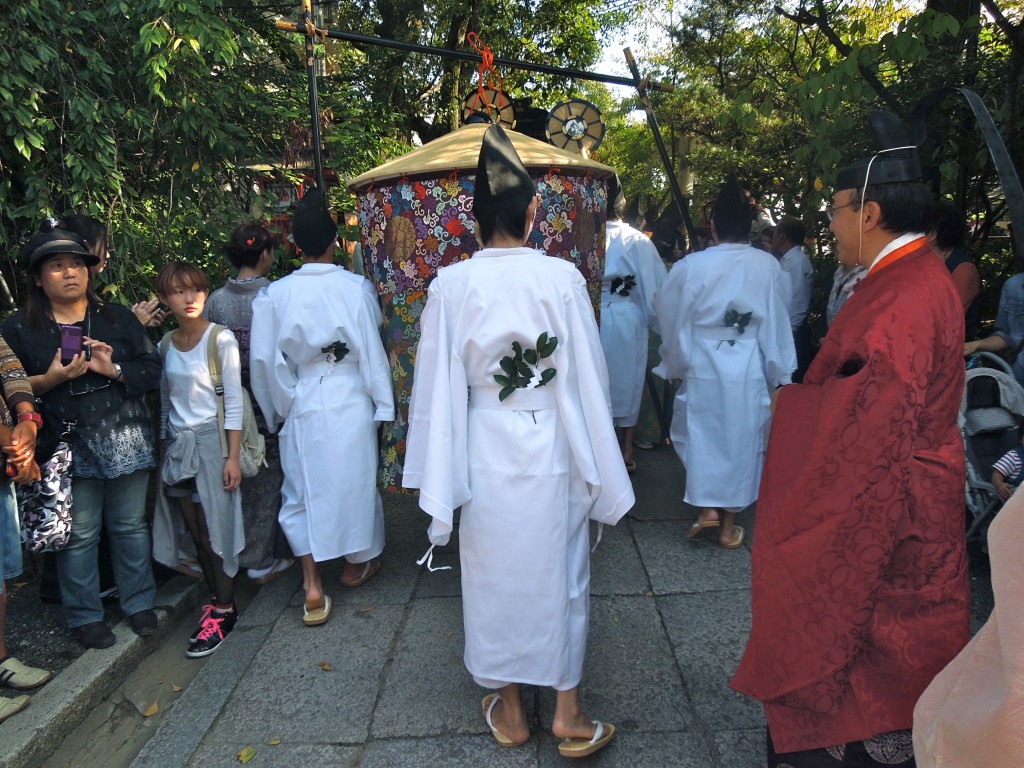
Leave a Reply